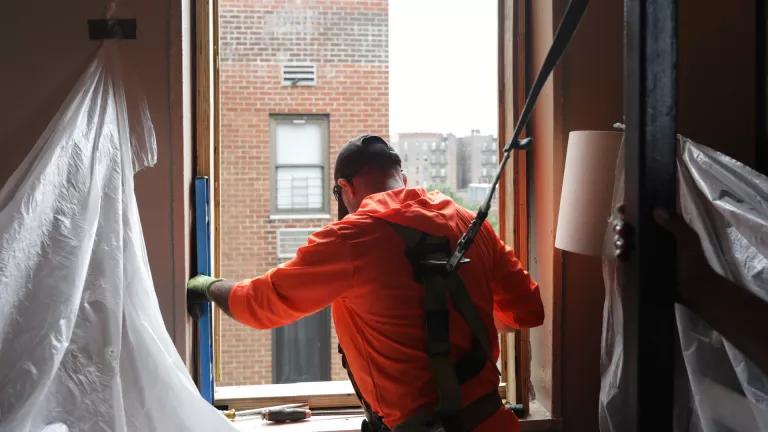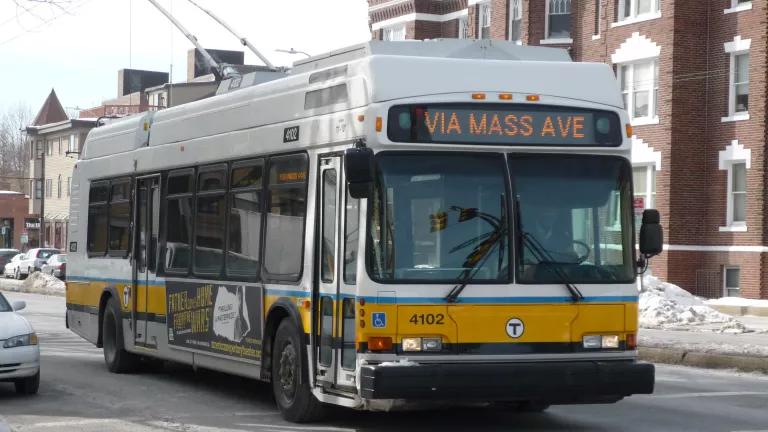Clean Truck Rules Will Benefit Southern New England
The states of Massachusetts, Connecticut, and Rhode Island stand to see $12.7 billion dollars in net societal benefits, improved health and air quality, and increased investments over the next 30 years through adoption of Clean Truck Programs in their states.

Photo by Colby Winfield on Unsplash
The states of Massachusetts, Connecticut, and Rhode Island stand to see at least $12 billion dollars in net societal benefits, improved health and air quality, and increased investments over the next 30 years through adoption of Clean Truck Programs in their states. That’s according to a new, independent report by MJ Bradley & Associates (MJB&A) that looked at the potential benefits of clean, zero-emission trucks in buses in each state and the Southern New England region as a whole.
A Clean Trucks Program consists of two complementary rules that will help reduce emissions in Southern New England: The Advanced Clean Trucks (ACT) rule and the Heavy-Duty Omnibus (HDO) rule. The ACT rule requires manufacturers to produce and sell an increasing percentage of zero emission vehicles while the HDO rule establishes more stringent limits on emissions of nitrogen oxides, a contributor to smog.
The report, commissioned by NRDC and the Union of Concerned Scientists, shows that a cleaner, zero-emission fleet will result in improvements to air quality and resident’s health, reductions in greenhouse gas emissions, financial savings for fleet owners, and lowered electricity bills for residents of Southern New England. The report also analyzes the additional benefits of Clean Trucks with 100% percent ZEV sales across all truck categories by 2040, which increases the potential benefits to the region.
Connecticut, Massachusetts, and Rhode Island each have their own goals to reduce pollution from the air—Massachusetts being the most ambitious with a goal of net-zero emissions by 2050. However, since transportation is the largest source of greenhouse gas emissions in Southern New England, in order for the states to meet their climate goals, zeroing out pollution from the transportation sector is crucial. Luckily, all three states have set a goal of 100% zero-emission truck and bus sales by 2045. But as the MJB&A report highlights, the ACT and HDO rules are important steps to achieving and realizing these goals.
To maximize the benefits of the ACT and HDO to the region and to the individual states, policymakers in Connecticut, Massachusetts, and Rhode Island must swiftly move forward in adopting the ACT and HDO rules.
A Clean Trucks Program Will Deliver Public Health and Economic Benefits to Southern New England
While the region’s 532,200 commercial trucks and buses account for only 6% of the vehicles on the road, they have an outsized impact on public health and are responsible for 48 percent of the emissions of smog-forming nitrogen oxides (NOx) and 41 percent of the fine particulate matter (PM) from all vehicles.
While adopting the ACT and HDO rules under a Clean Trucks program are important first steps, Connecticut, Massachusetts, and Rhode Island must also adopt additional measures designed specifically to ensure zero-emission technologies and the associated reductions benefit communities of color and low-income communities (i.e., environmental justice communities). Environmental justice communities are exposed to disproportionately high levels of air pollution in Southern New England and across the country, including pollution from trucks moving goods together with ships and trains.
Therefore, when Southern New England states consider adoption of the ACT and HDO, they must come in combination with other policies and programs such as creating zero-emission zones where the use of internal combustion engine vehicles is limited; replacing and retrofitting existing diesel equipment; establishing deployment and incentive programs for EV charging infrastructure; and mandating emission-reduction measures that target environmental justice communities, transportation corridors, and port regions.
A Clean Trucks Program Will Deliver Public Health and Economic Benefits to Southern New England
The MJB&A study projects a Clean Trucks program would result in the replacement of more than 315,000 diesel trucks and buses with ZEVs (59 percent of the in-use fleet) by 2050 in Southern New England. Key region-level benefits between 2024 and 2050 would include:
- Reducing unhealthy smog and air toxics by cutting NOx emissions by more than 235,000 metric tons and PM2.5 pollution by 626 metric tons.
- Improving public health by avoiding over 153,000 respiratory-related illnesses, 270 hospital admissions and emergency room visits, and 269 premature deaths.
- Cutting greenhouse gas emissions by nearly 40.5 million metric tons.
- Creating good, clean jobs, with an average wage almost double the average wage for jobs that are replaced.
- Reducing the annual electricity bill of the average Southern New England household in 2050 by $52 and the average commercial customer by $220 per year as excess utility revenues from ZEV truck fleets are returned to all utility customers.
- Attracting $100 million per year in investments in public and truck depot–based EV charging infrastructure.
Accelerating the deployment of zero emission trucks and buses would also dramatically lower pollution from these vehicles compared to today’s levels. A Clean Trucks Program would contribute to reducing truck and bus emissions by 92 percent for NOx, by 80 percent for PM2.5, and by 49 percent for GHGs compared to today’s levels.
State specific results can be found in Appendix B-D of the MJB&A report.
Next Steps
Fortunately, Massachusetts and Connecticut are considering plans to move forward with the ACT. But in order to reap the benefits outlined above, all three Southern New England States (Connecticut, Massachusetts, and Rhode Island) must not only move forward to adopt the ACT but must also adopt the HDO and additional policies to ensure that all citizens see the benefits of zero-emission transportation.




